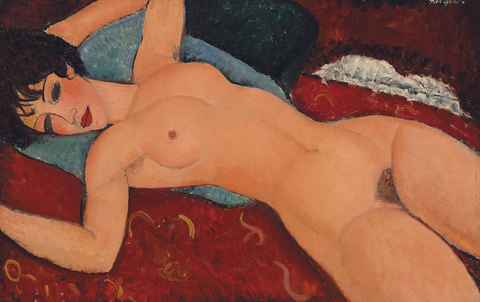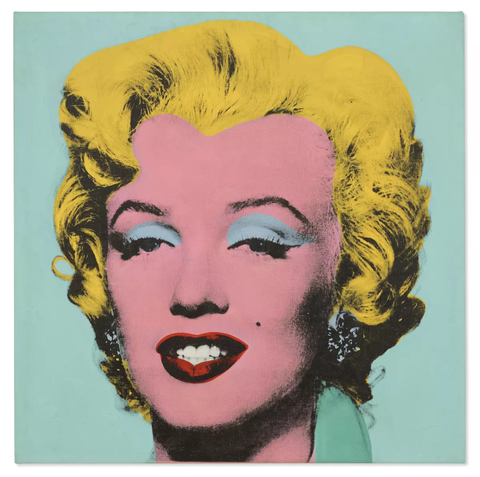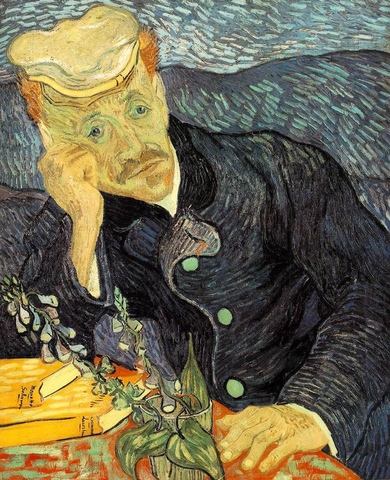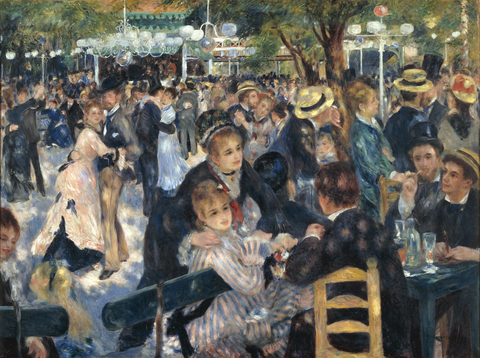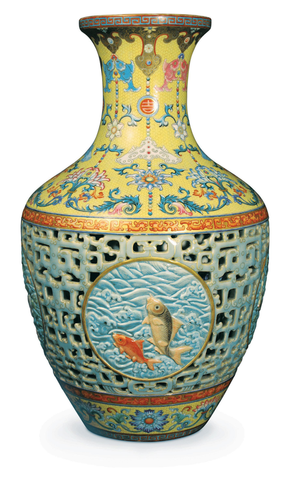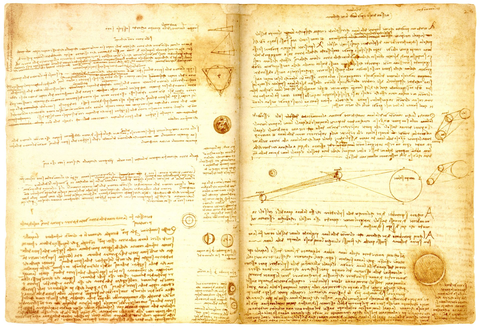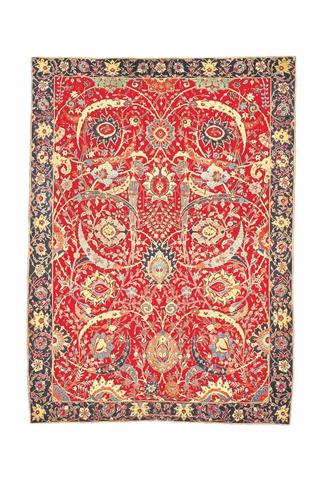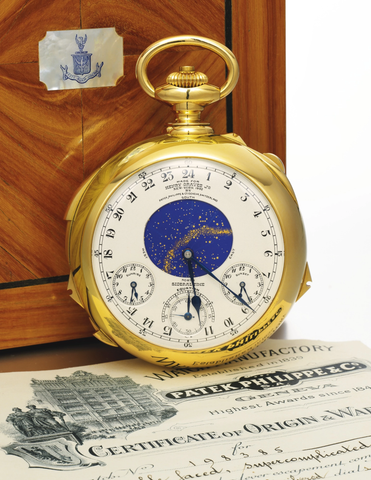The appeal of fine art and antiques often lies in their historical significance, exceptional craftsmanship and inherent rarity. When these factors converge in a modern auction house, the results can be staggering. Discover some of the most expensive auctioned items and reveal the fascinating stories behind these extraordinary pieces.
The Origins of Art Auctions

A modern auction house. Sotheby’s, New York, 2022. Source.
Art auctions have a rich and storied history dating back to ancient civilizations. Roman soldiers would auction off the spoils of war, including art and other valuable materials, to the highest bidders. While there were some forms of art sales and auctions during the Middle Ages and Renaissance, it wasn’t until the advent of the Dutch Golden Age that a true class of collectors — spurred by the financial successes of the Dutch East India Company and globalizing trade — emerged in the Low Countries. The appearance of phenomena like Wunderkammer, or cabinets of curiosities, in middle-class mercantilist Dutch homes spoke to a desire to collect artworks, expensive items and ephemera from disparate parts of the globe. Around this time, the first modern auction house, Stockholms Auktionsverk, opened in 1674 in Stockholm.
By the 18th century, the beginnings of modern auctions could be discovered in London, with the foundation of two of the world’s most important auction houses: Sotheby’s in 1744 and Christie’s a few years later in 1766. Even with their own storied histories and record sales, today's global auction houses — like Christie's, Sotheby's, Phillips and Bonhams — owe their origins to the distant auctioneers of the past.
10 of the Most Expensive Art and Antiques Sold at Auction
Salvator Mundi by Leonardo da Vinci
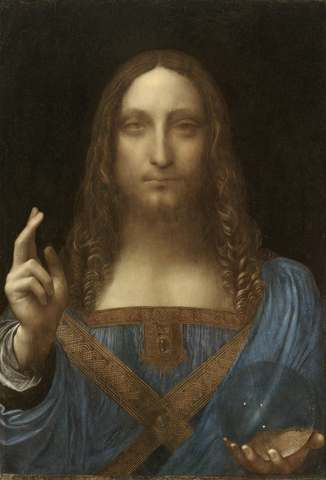
Salvator Mundi, a masterpiece attributed to Renaissance master Leonardo da Vinci, was sold at a 2017 auction conducted by Christie's New York for the staggering sum of $450.3 million. Badr bin Abdullah Al Saud, a Saudi Arabian businessman and politician in the royal family, purchased the painting.
Its sale marked a significant milestone in the art world, as it became the most expensive artwork ever sold. Salvator Mundi, believed to have been painted around 1500, is a representation of Jesus Christ as Savior of the World. The artwork's impeccable provenance, exceptional quality, peerless sfumato and the air of mystery surrounding its rediscovery contributed to its record-breaking sale price.
Nu couché by Amedeo Modigliani
In November 2015, Nu couché, a seminal work by the Italian artist Amedeo Modigliani, fetched a remarkable sale price of $170.4 million at Christie's New York. The artwork was acquired by Liu Yiqian, a Chinese billionaire investor and discerning art collector, and serves as a striking example of Modigliani's distinctive style. Depicting a reclining nude woman with an elongated and sensuous form, the oil on canvas is quintessentially Modigliani, contributing to the artwork's appeal.
Shot Sage Blue Marilyn by Andy Warhol
Shot Sage Blue Marilyn, a noteworthy creation by the famed Pop artist Andy Warhol, was acquired in May 2022 for the notable sum of $195 million at Christie's New York by the prominent art dealer Larry Gagosian. A testament to the enduring influence of the artist in the contemporary art market, Shot Sage Blue Marilyn is part of Warhol's Marilyn Monroe series, composed of an iconic portrait of the actress swathed in vibrant colors.
The 1964 work is particularly significant because it was present in the artist's studio when performance artist Dorothy Podber pulled out a gun and shot holes in several canvases from the series, and Shot Sage Blue Marilyn was one of the paintings pierced by a bullet. Warhol's exploration of celebrity culture and consumerism continues to captivate collectors and art enthusiasts alike, particularly in light of the ever-increasing prices of the art market.
Portrait of Dr. Gachet by Vincent van Gogh
In May 1990, Portrait of Dr. Gachet, an emotive masterpiece by beloved Dutch painter Vincent van Gogh, achieved a remarkable sale price of $82.5 million at Christie's New York, equivalent to $184.8 million when adjusted for inflation. The artwork was acquired by Ryoei Saito, a prominent Japanese businessman and endeavoring collector.
Portrait of Dr. Gachet is a poignant depiction of the artist's personal physician, Dr. Paul Gachet. Van Gogh's intimate view of his doctor and confidant, heightened by his vibrant use of color, has positioned the painting as a lasting representation of his artistic genius.
Bal du moulin de la Galette by Pierre-Auguste Renoir
Ryoei Saito also purchased Pierre-Auguste Renoir’s Bal du moulin de la Galette in 1990. The artwork sold for $78.1 million, equivalent to $174.9 million when adjusted for inflation, at Sotheby's New York. A celebration of modernity dating to 1876, Bal du moulin de la Galette captures the spirit of a lively Parisian dance scene, showcasing the artist's signature style of light and color. Renoir's contribution to the Impressionist movement continues to be celebrated through such remarkable sales.
Qing Dynasty Vase from Pinner
In November 2010, this Pinner Qing Dynasty Vase was sold at auction for $69.5 million by Bainbridge's, London, to a private Chinese collector. It had been stowed in an unsuspecting family's attic for decades, with the previous owners having no idea of its historical and monetary value. The rare porcelain vase exemplifies the exquisite craftsmanship of the Qing Dynasty and the enduring fascination with Chinese art and antiquities in the international market.
Song Dynasty Ru Guanyao Brush Washer
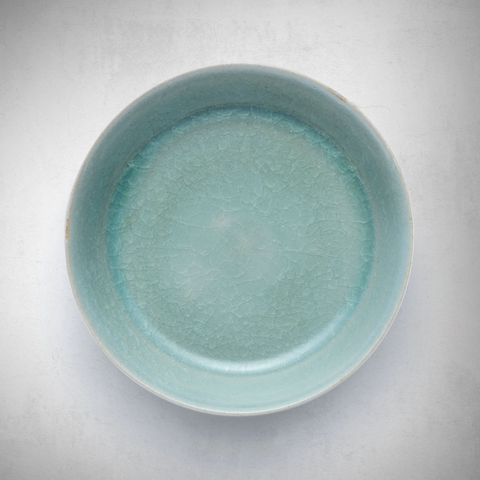
This Ru Guanyao Brush Washer hails from the Northern Song Dynasty of China, which reigned from 960-1279 CE. In October 2017, the ceramic piece was purchased for $37.68 million at Sotheby’s Hong Kong — a remarkable sale. The high hammer price it commanded underscores the continued demand for rare and well-preserved artifacts from China's cultural heritage, particularly in the Asian fine art market.
Leonardo da Vinci’s Codex Leicester
In November 1994, Bill Gates acquired Leonardo da Vinci's Codex Leicester at a Christie's New York auction for $30.8 million, equivalent to $60.8 million in today's currency. The Codex Leicester is a celebrated scientific manuscript by the Renaissance polymath, offering profound insights into various disciplines, including astronomy, geology and hydrodynamics.
Clark Sickle-Leaf Carpet
A Persian rug known as the Clark Sickle-Leaf Carpet was sold at Sotheby's in June 2013 for an impressive $33.8 million. This antique carpet, sumptuously decorated with an exceptionally rare sickle-leaf design woven of vibrant threads, is a testament to the enduring appeal of Persian rugs, particularly those with historical significance. The rug, believed to hail from Kirman, was housed for years in the Corcoran Gallery of Art in Washington, D.C., and has been exhibited widely across the United States and United Kingdom.
Patek Philippe Supercomplication Pocket Watch
At a 2014 auction at Sotheby’s Geneva, this Patek Philippe Henry Graves Jr. Supercomplication pocket watch sold for a remarkable $24 million. The lustrous yellow gold case houses a remarkably complex movement, that includes a perpetual calendar accurate to the year 2100, moon phases, celestial charts, sunrise and sunset times and more.
4 Important Art and Antique Auctions
Some of the most impactful auctions of recent memory trace their origins to the upper echelons of society, including influential business magnates, celebrities and other distinguished collectors. As individuals of substantial means and societal influence, these collectors can assemble estates of extraordinary value, encompassing a wide array of art, antiques and other unique collectibles. These collections, meticulously curated to reflect the personal tastes and preferences of their owners, serve as repositories of cultural and historical significance, and are an exciting event at any auction house.
The Estate of Gianni Versace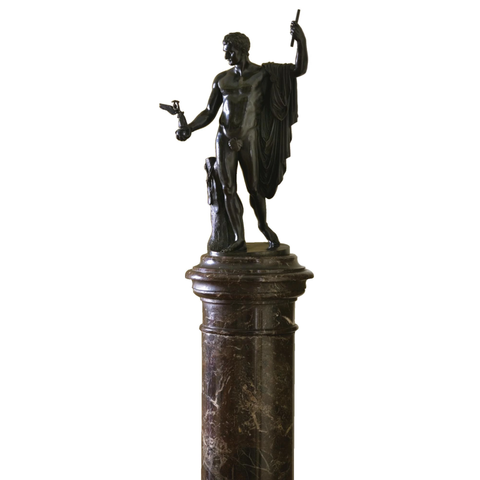
Napoleon, after a model by Antonio Canova. Early 19th century. Source.
Following the untimely death of Italian fashion designer and businessman Gianni Versace in 1997, much of the visionary’s extensive collections and estate went to auction at Sotheby’s New York in 2005. A later sale at Sotheby’s London in 2009 showcased paintings, furniture and other works of art from Versace’s Villa Fontanelle estate. Among the key pieces featured in this prestigious auction was the dining room suite, adorned with Versace's signature baroque motifs, and his luxurious bedroom furnishings. Many Classical and neoclassical busts and sculptures were also sold, highlighting Versace's pride for his Italian heritage.
The Paul G. Allen Auction

Les Poseuses, Ensemble by Georges Seurat. Painted 1888. Source.
The Paul Allen auction, a series of significant sales at Christie’s New York in May 2023, featured a wide array of items from the personal collection of Paul G. Allen, co-founder of Microsoft and a notable American business magnate. The auction’s important selection of rare artworks, including pieces by notable artists like Willem de Kooning and Edward Hopper, as well as iconic memorabilia, such as Jimi Hendrix's electric guitar and vintage automobiles like the 1936 Delahaye 135 Competition Court Roadster. Georges Seurat's Les Poseuses, Ensemble, which captures nude models in the artist's studio before his piece de resistance, Sunday on La Grand Jatte — housed today at the Art Institute of Chicago — was a standout. The diverse items, along with their immense cultural significance and impeccable provenance, piqued the interest of collectors and scholars worldwide.
The Collection of Peggy and David Rockefeller
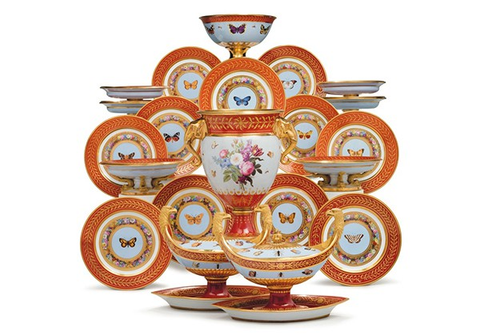
The Marly Rouge Service. Source.
In 2018, Christie’s New York managed the immense sale of the private collection of Peggy and David Rockefeller. Among the key pieces featured were masterworks by renowned artists such as Pablo Picasso, Claude Monet and Henri Matisse, as well as a diverse array of decorative arts from exquisite Chinese porcelain to European furniture, underscoring the Rockefellers' discerning taste. The prominent sale of the 19th-century Sèvres porcelain Marly Rouge service made for Napoleon Bonaparte stood out as one of the most coveted lots, realizing $1.8 million.
The Collection of Elizabeth Taylor
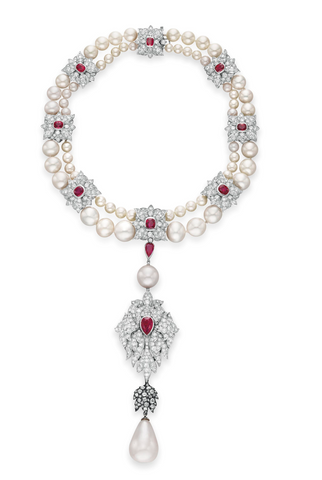
Cartier La Peregrina Pearl, Diamond and Ruby Necklace. Source.
Christie’s New York again managed the auction of the legendary jewels of Elizabeth Taylor in December 2011. Elizabeth Taylor, the iconic actress and style icon, assembled a jewelry collection of unparalleled opulence over her lifetime, with the sale offering a window into her personal aesthetic and the high society of her era. Among the key pieces featured in this extraordinary auction were the historic 33.19-carat Asscher-cut Krupp Diamond, a gift from her then-husband Richard Burton, which garnered significant attention and exceeded its pre-sale estimate. Additionally, the sumptuous La Peregrina pearl necklace by Cartier, famously worn by Mary I of England, stood as a testament to Taylor's affinity for pieces of historical significance. These jewels, along with many others, reflected Taylor's passion for collecting and her association with some of the world's most storied gemstones. With nearly 25 items realizing over $1 million at hammer, the auction was a smashing success for Christie's.
Unconventional Items at Auction
Auctions have increasingly showcased unconventional items that challenge the typical boundaries of what constitutes value or cultural significance. These unique auctions have witnessed the sale of items ranging from vintage video game cartridges to virtual real estate in the metaverse, reflecting the evolving landscape of what collectors and enthusiasts deem desirable.
Such unconventional auctions have also featured artifacts from popular culture, like film props and memorabilia, as well as digital assets like non-fungible tokens (NFTs), which represent ownership of digital creations. These eclectic offerings have broadened discussions about the intersection of technology, contemporary art and cultural heritage.
Eiffel Tower Staircase
Designed by Gustave Eiffel in 1889, this particular section of spiraling stairs hails from the iconic Eiffel Tower in Paris France. This part of the escalier was replaced in 1983. After traveling from Paris to Montreal, where it remained in two different private collections for many years, it reentered the market again in November 2018, when it sold at auction for nearly $200,000.
Willie Nelson’s Braids
Following the passing of outlaw country superstar Waylon Jennings in 2002, over 2000 items from his personal collection went up for auction in his hometown of Phoenix by Guernsey’s. Among the treasures, which included boxing gloves from Muhammad Ali and Hank Williams’ cowboy boots, were Willie Nelson’s braids — from when his hair was still red — clipped as a gift to Jennings to celebrate his sobriety. Nelson’s braids garnered an astonishing $37,000 when they sold to an anonymous private collector.
Banksy’s Shredded Painting
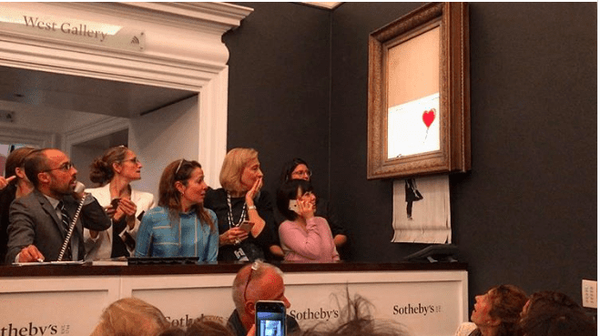
The very moment Banksy’s painting began to shred. Sotheby’s, 2018. Source.
In 2018, during a well-attended sale at Sotheby’s New York, bidding began on an anonymous British artist Banksy’s Girl with Balloon. As the hammer fell, locking in the sale price at $1.4 million, the painting began to lower through a disguised shredder hidden within the bottom of the frame. Mouths fell agape as half of the painting emerged from the bottom of the frame, cut into thin strips. The collector who had acquired the piece agreed to keep Girl with Balloon in its new form, and when the half-shredded artwork reappeared at a Sotheby’s auction in October 2021, it set a new record for Banksy, bringing in £18 million. As Sotheby’s relayed after the incident, it became the first work of art created during a live auction.
Auctions continue to hold enduring significance in the ever-changing, dynamic art market of the modern day. They stand as a reflection of evolving tastes, cultural shifts, technological advancements and financial power, serving as a barometer for both the value of art and antiques and the desires of collectors. To learn more about upgrading your own collection, check out our blog or explore our collections of rare antiques for sale and other treasures.
